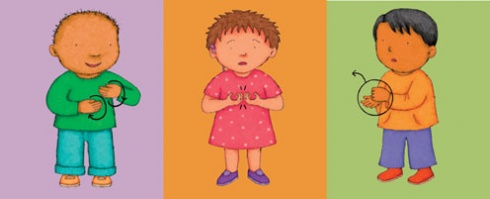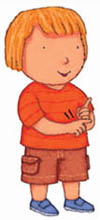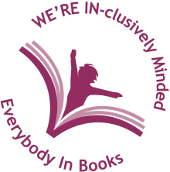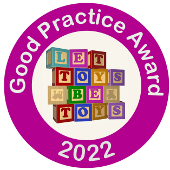
Sign Language
British Sign Language (BSL)
- is the language of Britain's Deaf community
- is a real, full, grammatically complex language
- is British, and not used in other countries (although similar dialects are used in other countries, eg Australia and New Zealand)
- is a visual language created by the Deaf community
- is used by an identifiable social language community,
so lives and changes as the society changes
 As with all languages, BSL has its own grammar and word order. The main topic is signed before you comment on it. Rather than saying 'This is my game'
As with all languages, BSL has its own grammar and word order. The main topic is signed before you comment on it. Rather than saying 'This is my game'
you would sign 'game - mine'.
Sign language is much more than just hand shapes
and combinations. The same signs may be used
to represent a number of different things. As well
as the sign itself, expression, position and intensity
of movement play a vital part. For example, the sign
for rain can be modified to show that it is merely
drizzling or raining heavily, depending on the intensity
of movement and facial expression.
Sign Supported English (SSE)
In SSE signs are used in English word order, but words such as 'the', 'is' and 'a' are left out. It uses BSL signs but is more linked to spoken English.
Cued Speech
Cued Speech makes traditionally spoken languages more accessible
by using eight hand shapes in four different positions near the mouth
to clarify the lip patterns of normal speech. The system was developed
with the aim of improving the reading abilities of children with hearing
impairments through better comprehension of the phonemes of English.
Cued Speech is not a sign language, but can be useful for users
of BSL wanting to learn English as a second language
(when BSL is their first language).


 Go to USA site
Go to USA site Go to AUS site
Go to AUS site


Email this page to a friend